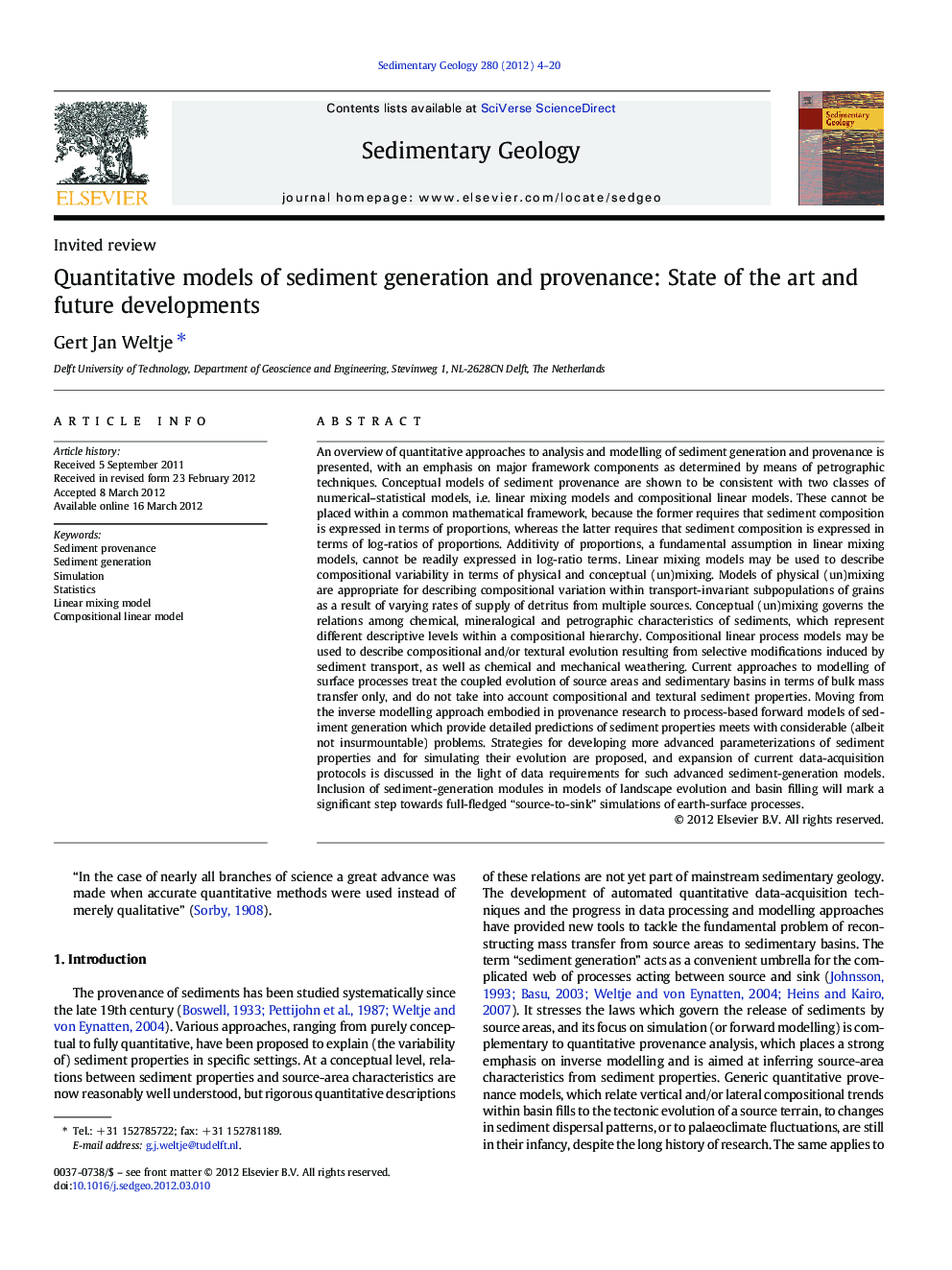| کد مقاله | کد نشریه | سال انتشار | مقاله انگلیسی | نسخه تمام متن |
|---|---|---|---|---|
| 4689655 | 1636081 | 2012 | 17 صفحه PDF | دانلود رایگان |

An overview of quantitative approaches to analysis and modelling of sediment generation and provenance is presented, with an emphasis on major framework components as determined by means of petrographic techniques. Conceptual models of sediment provenance are shown to be consistent with two classes of numerical–statistical models, i.e. linear mixing models and compositional linear models. These cannot be placed within a common mathematical framework, because the former requires that sediment composition is expressed in terms of proportions, whereas the latter requires that sediment composition is expressed in terms of log-ratios of proportions. Additivity of proportions, a fundamental assumption in linear mixing models, cannot be readily expressed in log-ratio terms. Linear mixing models may be used to describe compositional variability in terms of physical and conceptual (un)mixing. Models of physical (un)mixing are appropriate for describing compositional variation within transport-invariant subpopulations of grains as a result of varying rates of supply of detritus from multiple sources. Conceptual (un)mixing governs the relations among chemical, mineralogical and petrographic characteristics of sediments, which represent different descriptive levels within a compositional hierarchy. Compositional linear process models may be used to describe compositional and/or textural evolution resulting from selective modifications induced by sediment transport, as well as chemical and mechanical weathering. Current approaches to modelling of surface processes treat the coupled evolution of source areas and sedimentary basins in terms of bulk mass transfer only, and do not take into account compositional and textural sediment properties. Moving from the inverse modelling approach embodied in provenance research to process-based forward models of sediment generation which provide detailed predictions of sediment properties meets with considerable (albeit not insurmountable) problems. Strategies for developing more advanced parameterizations of sediment properties and for simulating their evolution are proposed, and expansion of current data-acquisition protocols is discussed in the light of data requirements for such advanced sediment-generation models. Inclusion of sediment-generation modules in models of landscape evolution and basin filling will mark a significant step towards full-fledged “source-to-sink” simulations of earth-surface processes.
Journal: Sedimentary Geology - Volume 280, 1 December 2012, Pages 4–20